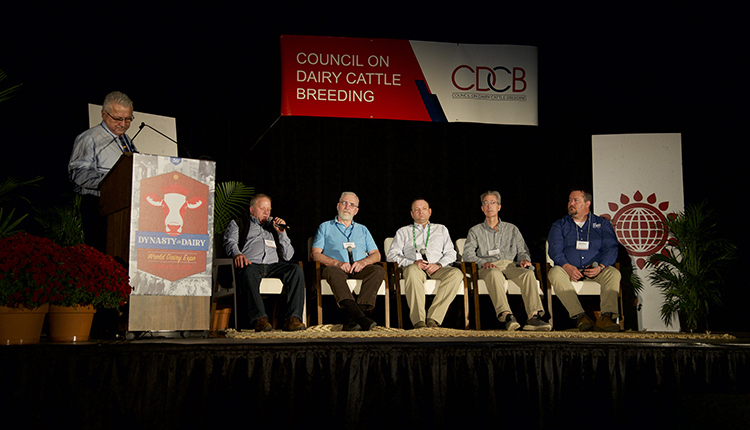
Dairy producers today have more genetic tools today than ever before. Genomic testing is the big player, and there are also new selection traits and indices, better methods to track and interpret data, and more reliable information that’s easily accessible.
This is all possible because of the work geneticists and other scientists have done over the years to uncover more of the secrets held within an animal’s DNA. A panel addressed how genetic discovery can also limit the impacts of undesirable conditions during a discussion at the Council on Dairy Cattle Breeding (CDCB) Industry Meeting at World Dairy Expo last week.
Haplotypes, which we think of when we consider undesirable genetic traits, are just short DNA segments on a chromosome that can be dangerous in the right scenario, reminded USDA genetic researcher Paul VanRaden.
“Every animal has genetic defects,” said Matt McClure, ABS Global’s lead dairy geneticist. Most are just too rare to make much of an impact. However, when you know about a mutation an animal possesses, you can avoid exacerbating the problem, which often comes from a homozygous mating.
Knowing about a condition, though, requires it being identified in the first place and then researched.
Spencer Hackett, a Holstein breeder in Minnesota, explained that knowing genetic concerns is critical as they make their farm’s breeding decisions. The arrival of genomic testing showed them that they had some recessive carriers in their herd, but because those animals were identified, he was able to manage matings to still take advantage of the desirable genetics the animals also possessed. “I don’t shy away from [carriers]; I just learn to manage them,” said Hackett.
Aware of how valuable having that genetic information is, Hackett encouraged all dairy farmers to take note of things that seem unusual in their animals and look for any patterns among calves born. In our industry today, he noted that it is easy to simply take a DNA sample from an animal to see if something can be uncovered. Thanks to genetic organizations like CDCB, it also becomes possible to cross-reference samples from your farm with those from around the country and even the world to see what the commonalities are and how to identify future carriers.
“Sometimes it’s not a genetic condition, and that’s okay,” added McClure, describing that it’s better to have someone aware of these cases than a condition proliferate in the dairy herd because it wasn’t reported to anyone. Muscle weakness, for example, is currently being researched because a farm had multiple calves exhibit problems standing up and reached out to their veterinarian. Without that initiative, the condition would still be spreading throughout the population as dairy farmers were unaware.
“We can’t work with it if we don’t learn about it,” summarized Neal Smith, executive secretary of the American Jersey Cattle Association and moderator of the panel. If something out of the ordinary happens to your animals, take a DNA sample and submit it for genomic testing. Share the story with your veterinarian, A.I. organization, or milk testing organization so further analysis can be done and connections with other cases might be made. Your future breeding decisions, and those of farmers throughout the industry, will benefit from it.
To comment, email your remarks to intel@hoards.com.
(c) Hoard's Dairyman Intel 2023
October 12, 2023








